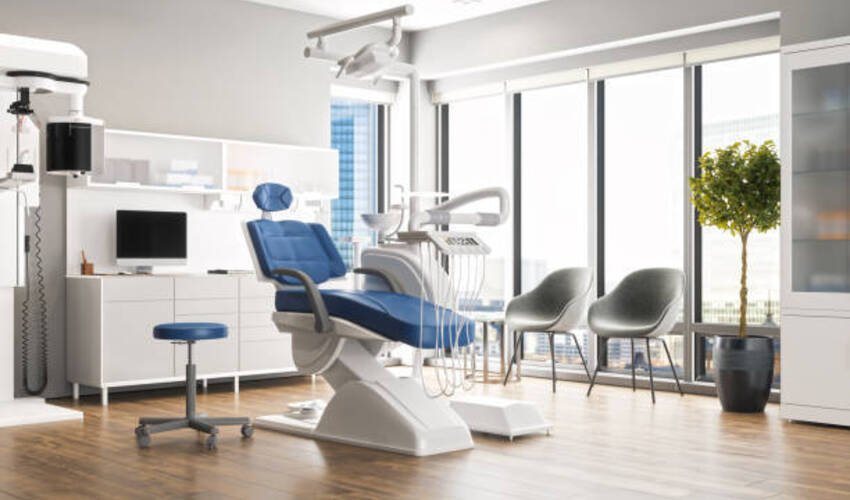While electronic medical records (EMR), wearable devices, and data analytic tech command most of the attention in the healthcare industry, it is still medical billing software that is a crucial cog in your revenue cycle. And although these new technologies may represent innovative and creative additions to medicine, there is no doubt that billing software has continually evolved, too, with many products now featuring amazing and robust analytics capabilities.
It is no secret that choosing the right medical billing software for your telehealth services or medical practice is one of the most crucial decisions you will make. There is no doubt that the significance of choosing the most suitable medical billing software for your telemedicine services is one that has many lasting implications.
And if you are a new practice owner, considering the various options at your disposal can be difficult. This is especially true given the high number of medical software vendors or providers out there.
You should know that choosing medical billing software for your telehealth services is quite similar to choosing practice management or EHR product. Note that due diligence is always required.
What is Medical Billing Software?
Note that healthcare providers use medical billing software in order to automate their various manual billing tasks. Some of these tasks are verifying patients’ insurance, processing and submitting medical claims, and processing payments. It is worth noting that medical billing software helps you process electronic as well as hard-copy data. This will help you determine what patients owe and what medical costs insurance providers will cover.
Note that the software helps you increase your collections by avoiding cumbersome and repetitive administrative tasks. There is no doubt that medical billing software helps automate many repetitive and error-prone medical billing tasks. It helps your medical office:
- Check patients’ insurance coverage
- Increase collections
- Provide financial reports on collections as well as rejections
- Post EOBs and payments
Common Features of Medical Billing Software
To streamline your telemedicine services, look for these features.
Insurance Billing
You likely know that insurance providers usually change the criteria for medical necessity. Also, note that remittance of denied medical claims can reduce revenue for your practice. This billing software feature is important as it helps you better manage your claims process by automating and streamlining claims submissions and denials and re-submissions.
Did you know that billing software often allows medical providers to easily track the status of their medical claims and even set up the electronic submission with insurance payers whom they tend to work with regularly?
Claim Processing
There is no doubt that electronic claims processing reduces the risk for error, enabling more efficient and quicker submission of medical claims. While resubmitting a medical claim takes a considerable amount of time, note that a good medical billing software system can expedite this process.
Did you know that the best systems also validate your claims and even claim codes before you submit them? This alerts you to potential problems and issues before sending the claim.
Patient Information Tracking
Note that the most basic and perhaps most important feature for medical billing software for telemedicine services is the important ability to maintain updated information on patients. This information includes medical history, medications, family history, and allergies.
By obtaining important customer insurance information prior to the appointment, you can easily verify the insurance eligibility. This helps avoid situations where patients are unable to pay simply because they were not aware of their latest insurance status.
Also, you can use medical billing software to verify the status of your patients’ insurance and confirm whether it is still active. You can even estimate copayments, prior authorizations, and out-of-pocket expenses.
Batch Payments
Did you know that using a batch payment feature, medical billing software can easily manage payments from several payers as well as patients simultaneously? This replaces manual sorting and shuffling with automation. It is no secret that batch payment functionality is incredibly useful in pursuing patient payments. This is because a majority of systems can easily create multiple emails as well as direct mail forms that give your patients the relevant details of all their payment responsibilities.
Also, it is worth noting that more advanced and sophisticated billing software may feature credit card processing and online bill pay, which you can offer through a patient portal or some other page on your site. Note that this function is important as it helps you scale your billing system as you start to see an increase in the number of patients.
Payment Reminders
You probably know that a medical software company gives you a soft collection letter that you can use to notify your customer of an overdue account. Did you know that most billing software provides you with a way to easily send these forms online? This negates the need to spend considerable time manually, creating as well as sending letters to customers.
Financial Reports
Did you know that most providers, especially those in private practice, need simple reporting capabilities? These reporting capabilities highlight the overall financial performance of their medical practice over a period.
Although reporting features may overlap with medical billing software for telemedicine services, some billing systems now allow users to generate reports detailing claims acceptance rates and denial rates, revenue sources, and revenue loss, if any, from outstanding payments.
HIPAA Compliant Billing Software
There is no doubt that the features of billing compliant HIPAA medical software are very important for your practice with regards to the HIPAA security standard and HIPAA privacy standard. One of the best things is that medical billing software will help your practice meet most of the HIPAA requirements pertaining to security as well as privacy of sensitive medical information.
Note that by now, most medical claim software in the industry accommodate the provider NPI. However, it is worth noting that HIPAA is being implemented over many years. This is why it is important that the software you choose should be able to accommodate the various changes that HIPAA has introduced.
Note that HIPAA compliant billing software should ideally have the following important features:
User Access
Keep in mind that medical billing software for your practice must be able to assign a user login as well as a password for each user. Also, note that the user permissions must be set depending on their responsibilities.
Data Backup
The software should back up practice data on a regular basis and place it in a secure location. You should establish procedures for the backup as well as recovery of data.
Plan and Healthcare IDs
Also, note that the software should accommodate future ID numbers, like the Healthcare Plan Identifier in order to identify the contract between the insurance company and the medical provider.
Benefits of Billing Software
There is no doubt that medical billing software is an important part of your revenue cycle management process. You likely know that billing and many other administrative tasks can be notoriously cumbersome and paper-laden.
Modern and effective medical billing software allows medical billers in your organization to be as efficient and effective as possible at coding and submitting medical claims. Moreover, it is worth noting that your staff will find that medical billing software helps them avoid errors.
This is why most providers find that their collection rates increase considerably when going from manually submitting medical claims to using advanced medical claim software. Lastly, advanced reporting tools usually provide valuable insights that are hard to gain without an efficient medical billing solution.
Important Considerations when Choosing Medical Billing Software
Stand-alone Billing Solutions vs. Integrated Suites
As a buyer, you will have to decide if you would like to implement a stand-alone system or a system integrated with patient scheduling. You can also choose a fully integrated scheduling, billing, and electronic medical records (EMR) system.
Did you know that many vendors offer all the three options? You may know that medical billing solutions or systems have long been the sole or main applications in many doctors’ offices. Also, note that they are often the first systems that many new practices will implement.
Ease of Use
It is no secret that implementing a new system and then adapting to it is challenging and time-consuming enough as it is. This is why you should make sure that the staff members who will use the new billing software are comfortable navigating it.
As everyone works differently, it is important that you consult your staff and also include them in the important decision-making process. In most cases, the software vendor will offer you a company rep to guide your personnel through the learning curve.
On-premise or Web-based
Did you know that SaaS or web-based billing systems have now become quite popular in the industry and make up for more than 50% of new solution sales? There is no doubt that low upfront costs, little to no IT requirements, and greater accessibility have convinced many buyers to use web-based systems.
Security
You know that the main concern from buyers of medical billing software is about data security. As medical billing entails the storage as well as transmission of sensitive and confidential patient data, buyers will always want to ensure that they are implementing a secure system. Most vendors are aware of this important need and hence offer HIPAA-compliant systems.
Final Thoughts
As you can see, medical billing software is important for your practice as it provides you with increased convenience, less tracking of paperwork as well as a more streamlined and efficient office. If you manage or run a medical practice, you no longer have to spend valuable time looking for medical records and retrieving them from off-site storage facilities.
Read Dive is a leading technology blog focusing on different domains like Blockchain, AI, Chatbot, Fintech, Health Tech, Software Development and Testing. For guest blogging, please feel free to contact at readdive@gmail.com.





